Capital Campaign Materials for Online Donor Solicitation (Nix the Brochure)
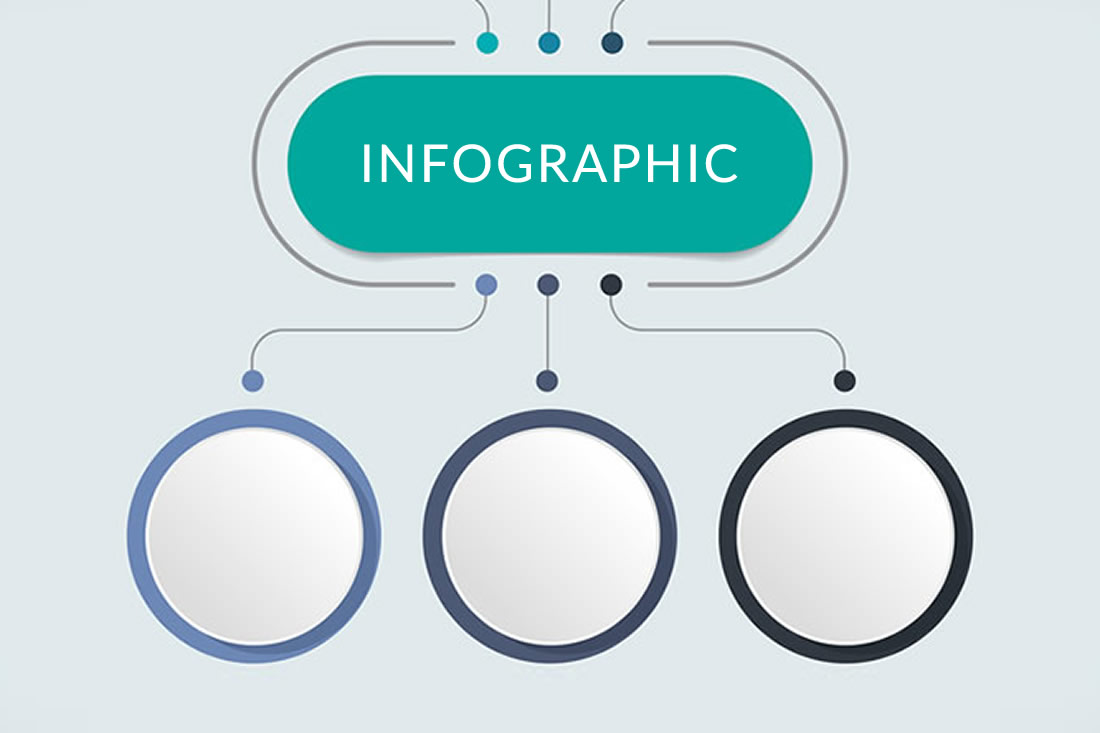
If you’ve been soliciting donors online, you’ve probably already figured out that a capital campaign brochure doesn’t work very well.
Honestly, I don’t think capital campaign brochures have worked very well for in-person solicitations either.
The Problem with Capital Campaign Brochures
If you feel as though you must have a glossy campaign brochure, think of it for what it is — a leave-behind piece that will sit on your donor’s desk or coffee table as a reminder of you and your campaign.
However, don’t think about it as a solicitation piece. It’s not good for that.
Why not?
Because when you talk with a donor, you don’t want them to try to read blocks of text. You don’t even want them to be distracted by wonderful photos that don’t tell a clear story.
Brochures are distracting.
When talking to your donors, whether in person or on Zoom, dense blocks of text are nothing more than a distraction. Your donor, when talking to you, doesn’t have the time or band-width to actually read the text which puts them at a disadvantage.
They don’t know whether they should try to read or look at you. That sets up an uncomfortable tension.
Inspired by the excellent work of ForImpact, we’ve developed a format for the Toolkit — it’s a graphically-simple, easy-to-use document that works much better than a brochure. This document allows you to discuss the campaign with your donors in a way that provides the essential information but lets you, the solicitor, fill in the details as the donor asks for them.
We call this document a Donor Discussion Guide.
Try a Donor Discussion Guide Instead
A Donor Discussion Guide is a nicely-designed infographic that’s divided into three sections:
- On the top, it will include bullets that answer the question WHY — what’s the impact of what you are raising money for.
- In the center section, it lists the WHAT — what are you going to do with the money your campaign will raise? And how much do you plan to raise?
- And at the bottom, it provides what the donor needs to understand HOW they might participate in the campaign. The most important here is the gift range chart and perhaps a donor recognition plan.
A sample Donor Discussion Guide:
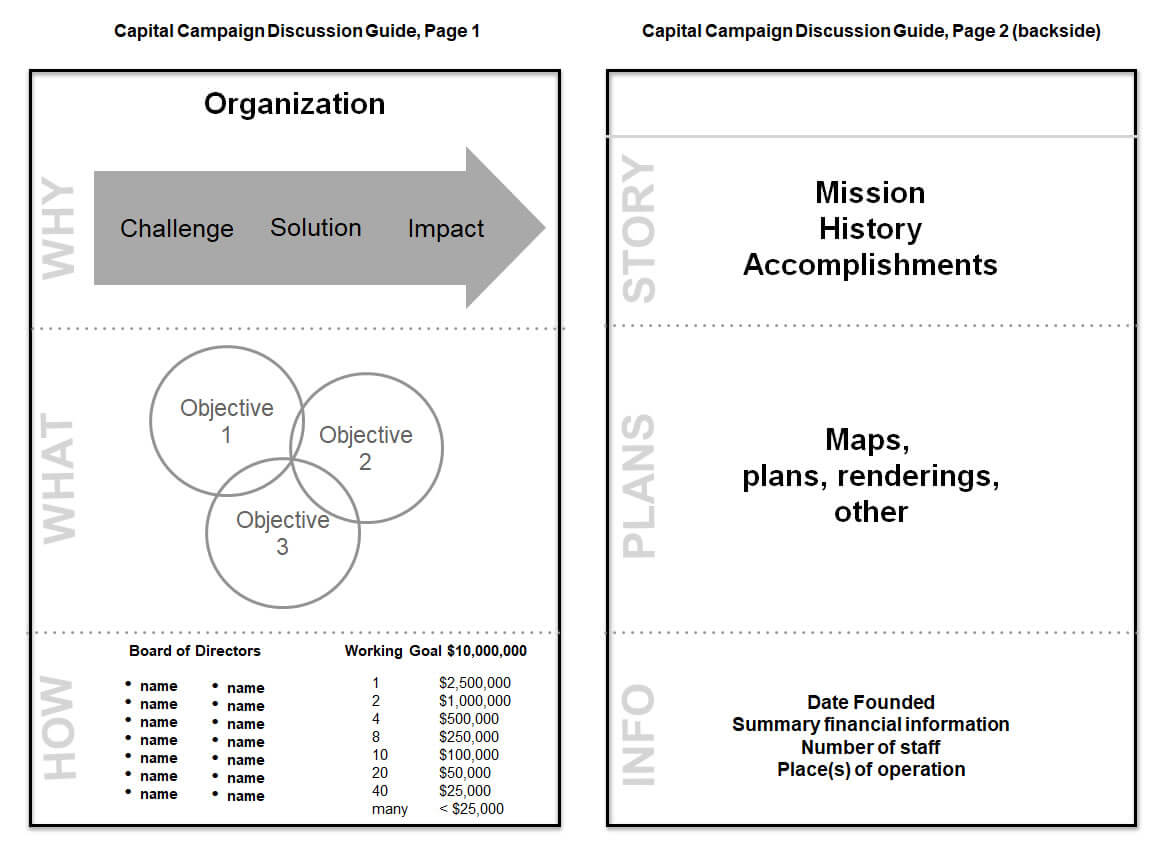
On the second side or page, you can include other information that a typical donor might wish to see. That might include a map, floor plans, statistics about your organization, a brief list of key staff and board members.
Above all else, aim for simplicity.
Ideally, you’re going for a simple infographic with plenty of white space and text that doesn’t require squinting. In fact, it should be simple enough so that a donor can take it in at a glance and you can use it to guide your conversation.
This Works Great Online or In-Person
Because a document like this is so brief and simple, it will work both in-person and on Zoom.
When in-person…
In-person, you can sit side-by-side with your donor and put the document on the table between you. You can give your donor a marker and keep one yourself so you can both draw and write and mark up the page. Then, at the end of the visit, you can take an iPhone photo, leave the marked up version with your donor and take the image back for your files.
When online…
On a Zoom meeting, marking up the discussion guide isn’t as easy (though that technology) is likely to get better in the near future. But you can share your screen, make the document larger or smaller and highlight the sections you want to discuss.
Then, after your meeting, you might mark up a print copy to reflect the discussion and send it to the donor.
Capital Campaign Materials: 3 Key Takeaways
As more of us are moving toward online donor meetings, here are three things to keep in mind regarding your online campaign materials.
1. Keep things simple and scannable.
It’s not easy to read blocks of text when you are sitting with someone. KISS it — Keep It Simple, Sweetie!
2. Your campaign materials should promote conversation.
Solicitation materials don’t have to cover everything there is to say. They should prove an outline that gives the donor a chance to ask questions. You’ll fill in what the donor wants to know.
3. Don’t forget your gift range chart
One of the most effective tools for soliciting gifts is the Gift Range Chart. This chart should most certainly be a part of your Donor Discussion Guide.
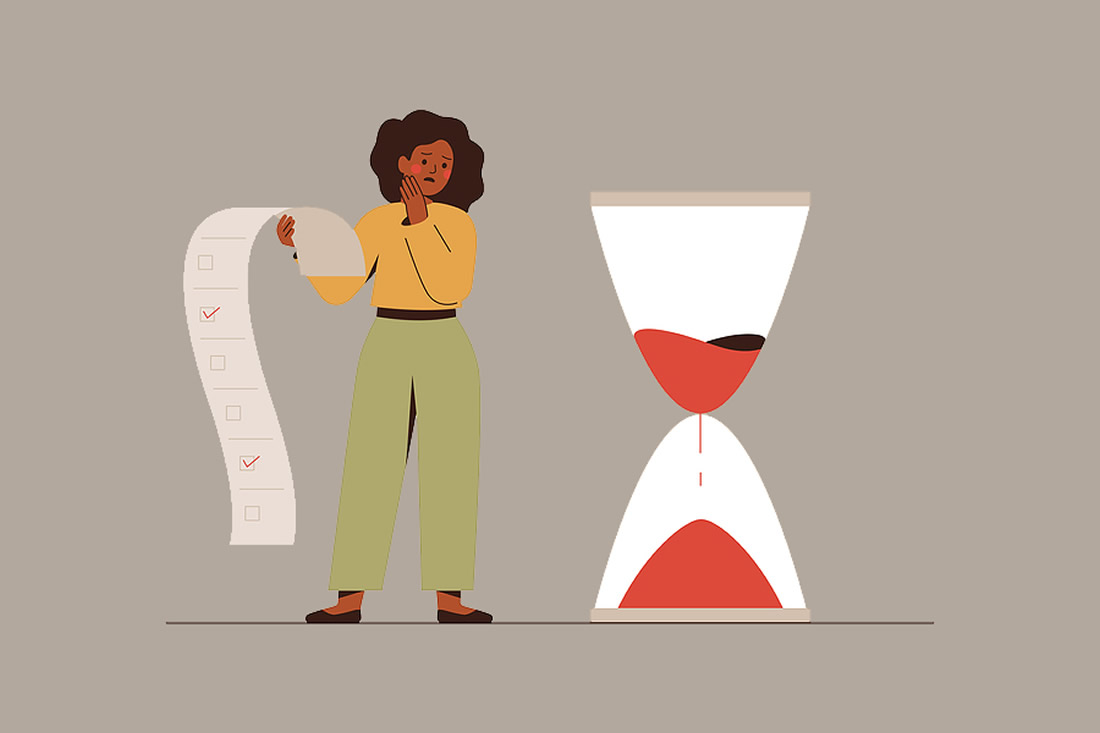
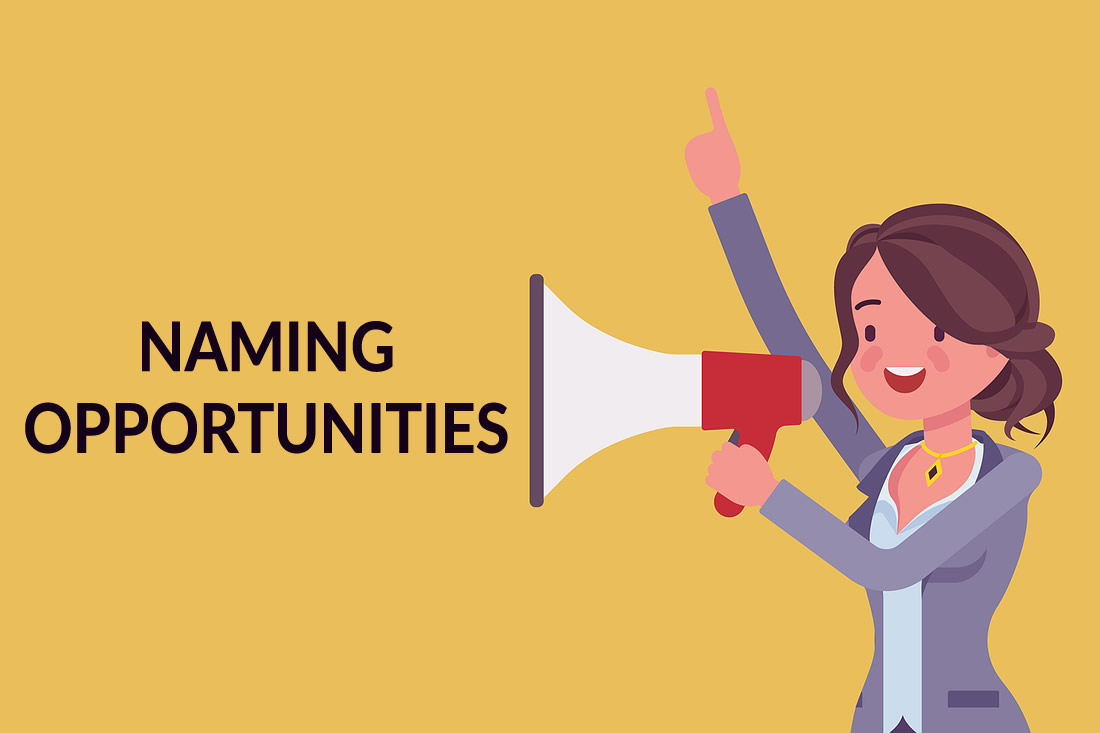
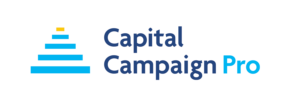
Great sample. I’ll use it! Thanks Amy!